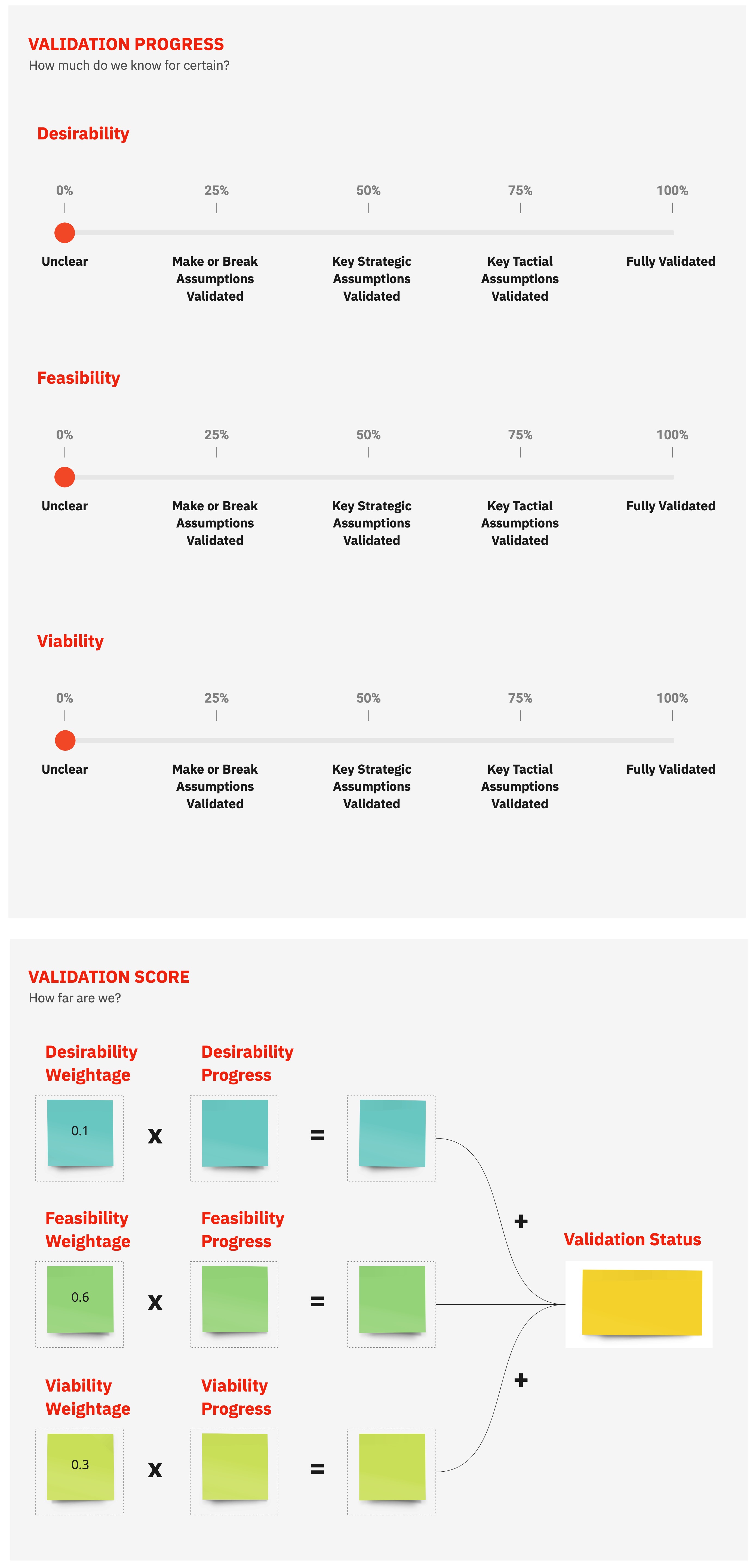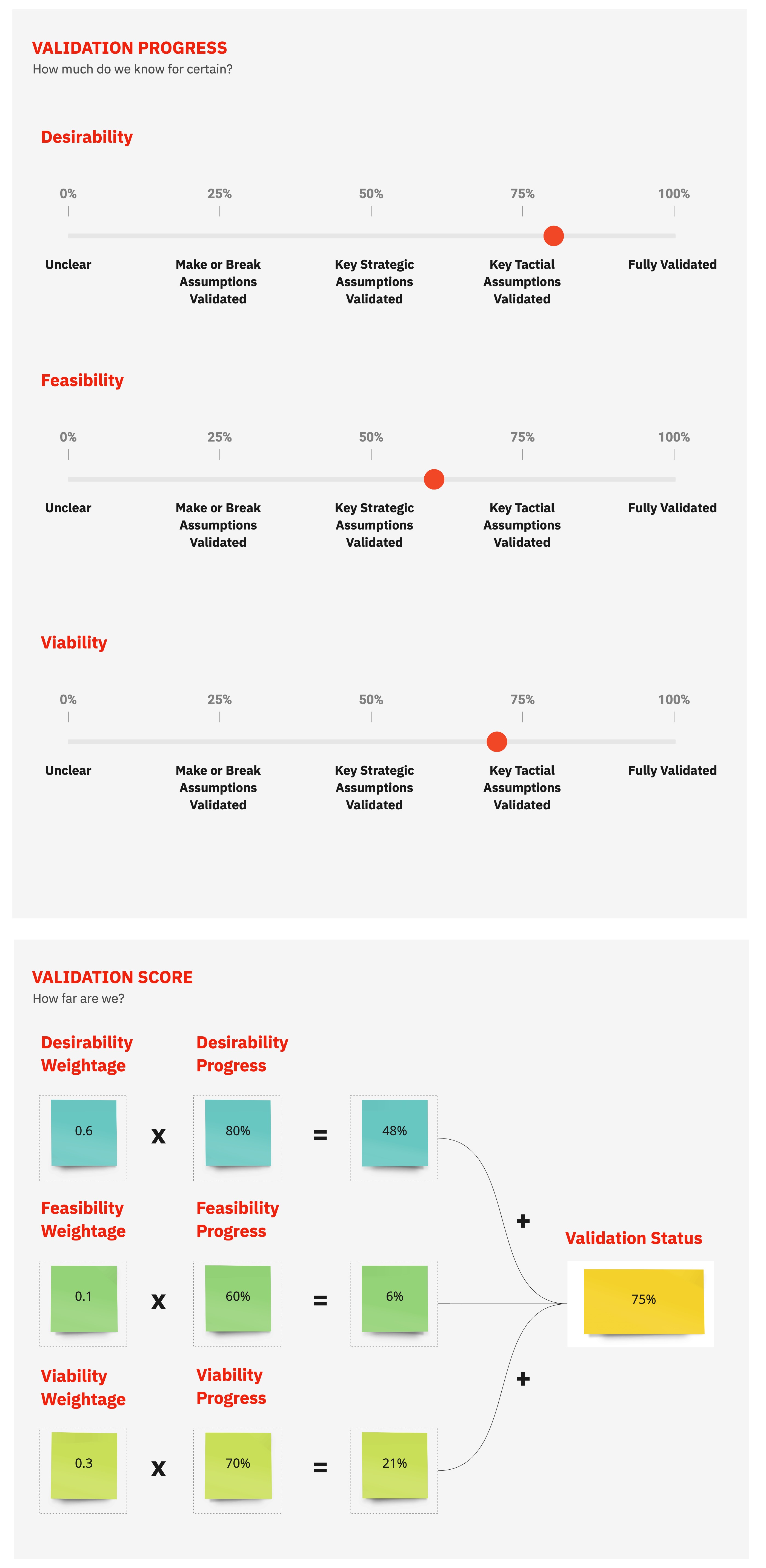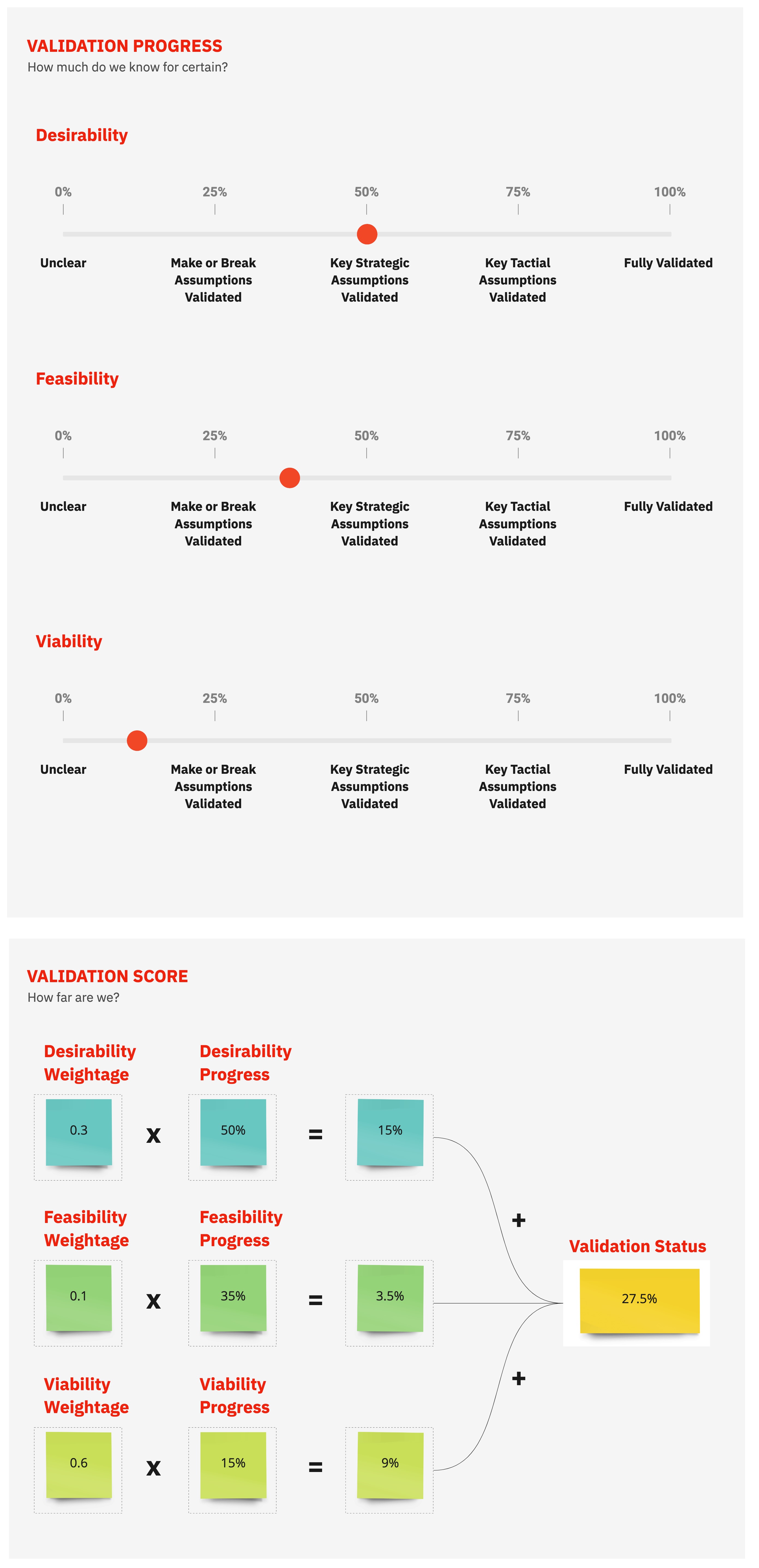¶ Concept Score Card
¶ What it is
To keep track of the Validation progress of the concept, achieved through Experimentation, we use a Concept Score Card that gives us an overview of where we stand in progress. After every bout of Experimentation, we can refer back to this Concept Score Card, update it and discuss the progress of the Validation of the concept.
¶ Why it is useful
Validation can be a confusing or opaque process. It is tough to know where the team stands in the concept's overall risk reduction or clarity. Hence a Concept Score Card that assigns clear progress values can help tremendously.
¶ When to use it
The Concept Score Card is applicable whenever a longer Experimentation and Validation process is run, which consists of more than just a handful of experiments.

¶
¶ How is it done
- To set up your Concept Score Card, reflect on the concept at hand and assign weightage to Desirability, Feasibility, and Viability. The weights you can give are 0.6, 0.3, and 0.1. The most crucial and risky aspect gets a 0.6, whereas the easiest and most apparent aspect gets a 0.1, and the third one gets a 0.3.
- Whenever you finish scoring experiments, review the D, F, and V scales and update them:
- The first 25% of the scale represents all “Make of Break” assumptions; move the scale as you validate them.
- The second 25% of the scale represents the most critical Strategic assumptions; move the scale as you validate them.
- The third 25% of the scale represents the most critical Tactical assumptions; move the scale as you validate them.
- The last 25% represents the remaining assumptions; move the scale as you validate them.
- After updating the scales, calculate the overall score.
¶ Do's & Don't
Do's
- Discuss with the team the perceived versus the indicated progress. Discuss any gaps that might exist.
- Try to understand what level of Validation or Clarity you want to achieve. 100% is rarely the answer, as you get stuck in analysis paralysis for every detail. Typically somewhere between 50% - 70% is a good range for fast and agile innovation projects and above 80% - 90% for heavy, high-investment initiatives.
Don't
- Don’t get stuck believing that the values can only go up during a Validation. After an Iteration or Pivot, you might need to set back a certain scale depending on the impact.
¶ Tools needed
- Whiteboard (physical or virtual)
- Post-it notes (physical or virtual)
- Concept Score Card
¶ Example

